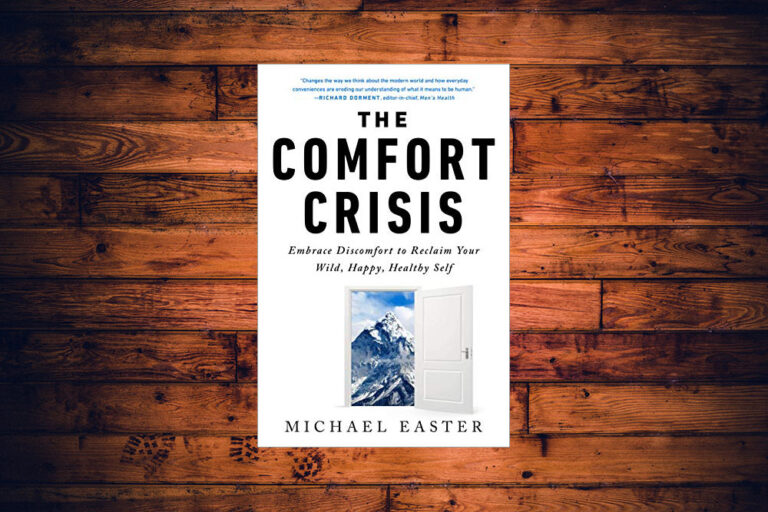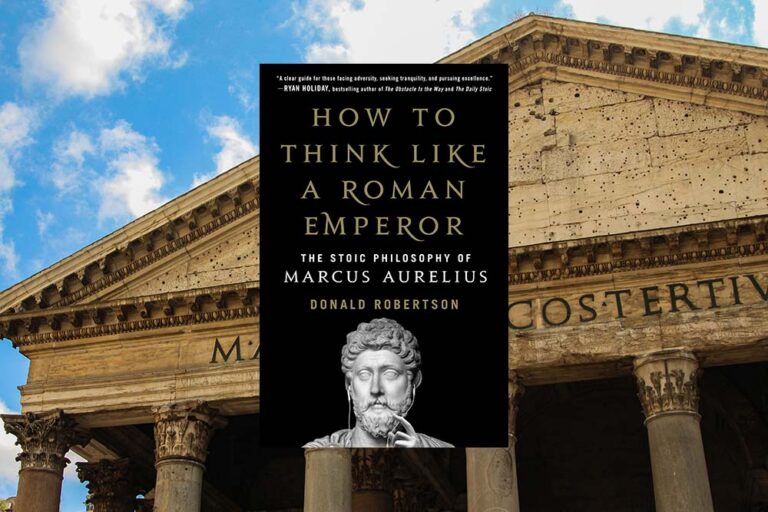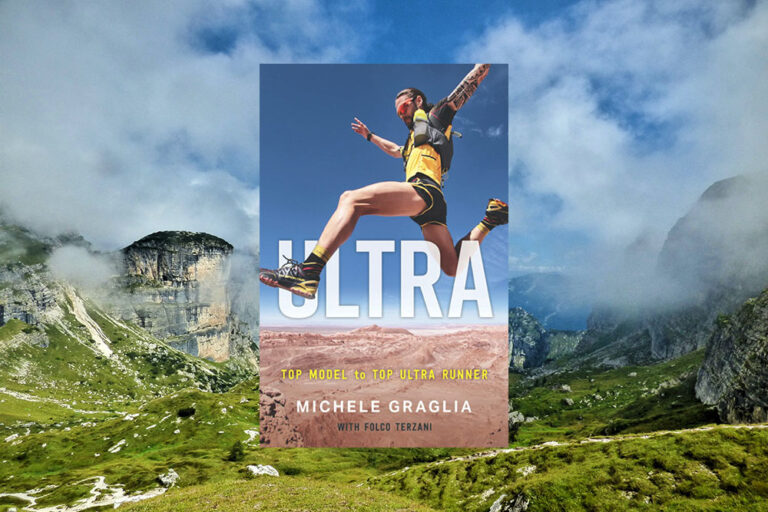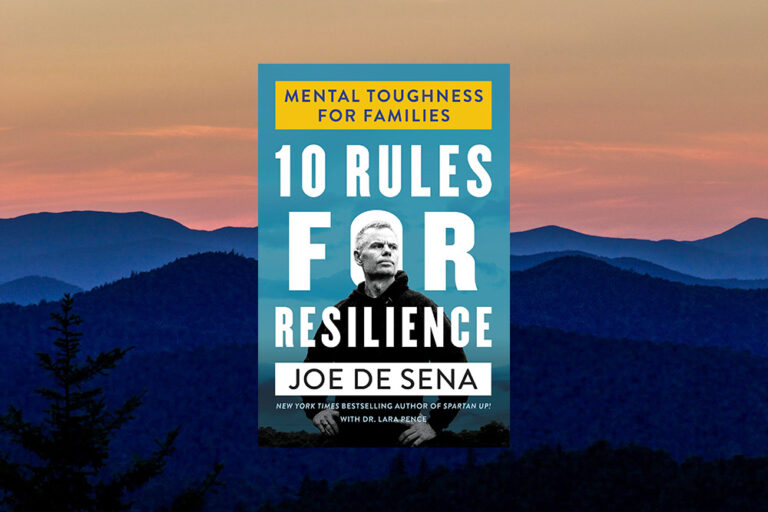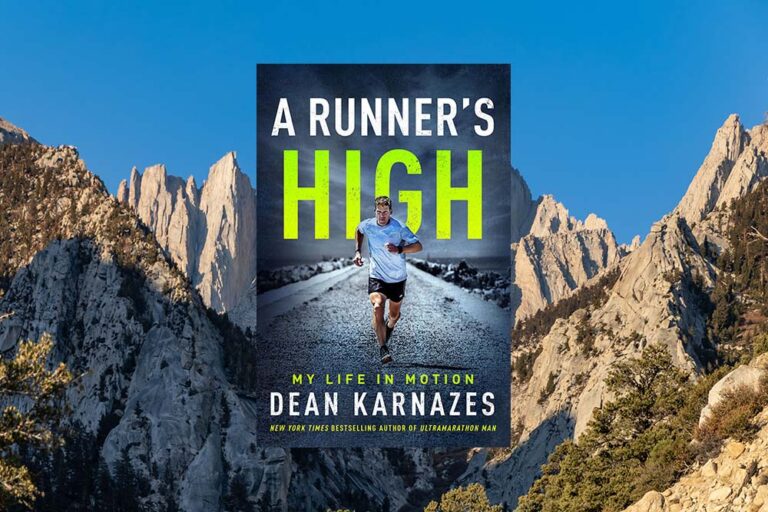#3: The Relationship Between Discomfort and Fitness. Notes From Michael Easter’s Book “The Comfort Crisis” (Part 2)

In the first part of my notes on Michael Easter’s book The Comfort Crisis: Embrace Discomfort To Reclaim Your Wild, Happy, Healthy Self, we talked about the addiction to comfort and the fear of discomfort.
In today’s article we’ll dive deep into the relationship between discomfort and fitness.
How Discomfort Affects How and What We Eat
One study found that overweight people are more likely to eat when faced with stress compared to lean people. Another found that, even when they weren’t hungry, overweight people reported having more food cravings and eating more junk foods. Potenza in his research wrote that “given the rewarding properties of food, it is hypothesized that hyperpalatable foods may serve as ‘comfort food’ that acts as a form of self-medication” to distract people from unwanted stress.
Ultraprocessed foods are like cheap, over-the-counter, omnipresent Xanax. But, as with pills, once the effect wears off, the stress is still there. So a person must then take another pill or eat more junk. Side effects? Weight gain, heart disease, stroke, cancer, high blood pressure, high LDL cholesterol, type-2 diabetes, fatigue, depression, osteoarthritis, pain, early death, etc.
Comfort food is one of the primary methods of dealing with stress. It’s also one of the most destructive ones in the long term.
In the book, Michael shares findings suggesting that discomfort (or its lack thereof) impacts our eating patterns in a few big ways:
1. People who successfully lose weight are more capable of handling discomfort
If you have little experience with discomfort, you’ll also struggle to tolerate the feeling of hunger. This will result in bad eating habits and make it hard to lose body fat and keep it off.
As Michael notes:
Just 3 percent of the people who lose weight in a given year manage to keep it off. Their secret isn’t some special food or exercise no one else has. It’s their ability to get comfortable with discomfort.
I’m a big fan of intermittent fasting as a tool to get comfortable with the uncomfortable feeling of hunger.
These days, after more than a decade of daily fasting (and occasional longer fasts up to 3 days), I don’t perceive hunger in a negative way. Each day, I fast for between 16-20 hours so my default is NOT eating.
Hunger used to be an everyday companion for our ancestors. Today, what we call “hunger” (a few hours between meals) has nothing to do with what it really is.
2. Dealing with stress in a positive way may be the key difference between people who maintain a healthy weight and those who struggle with it
Covered in the book nutritionist Trevor Kashey says:
People who are at a consistently healthy weight don’t have better genetics or a higher metabolism, and they don’t magically burn more calories. They’re just more likely to deal with stress by, like, going for a walk instead of eating. That’s really the difference.
How we deal with stress may affect how often we eat emotionally and how likely we are to stick to our eating plan.
In the book, Kashey suggests finding “calorie-negative” ways of coping with stress. His number one recommendation is walking. It relieves stress, puts distance between you and the temptation to eat, and burns calories.
It also gives you the opportunity to think about why you want to eat. Developed by Trevor Kashey nutrition plan first comes down to this awareness, well before he addresses eating specific foods to reduce body fat:
A person should mostly be eating unprocessed whole grains and tubers, fruits and vegetables, and lowish-fat animal protein.” These foods lead us to the sweet spot where we find a healthy weight and keep meal satisfaction high, he said. “An average plate could be a quarter animal protein, a quarter whole grains or tubers, and half vegetables or fruit. Highly active people might want to do half whole grains or tubers and a quarter vegetables or fruit.” (A number of Kashey’s clients said they’ll also add calorie-light foods like cabbage or spinach to their meals, to make them even more filling.)
3. People who eat a diet that focuses on whole foods experience less disease
Michael quotes the findings of Swedish anthropologist Staffan Lindeberg. In the early 1990s, the scientist traveled to the island of Kitava in Papua New Guinea to study the lives of the local inhabitants.
The Kitavans’ lifestyle is somewhere between hunter-gatherers and subsistence farmers. Or in other words, it’s completely different from the lifestyles of most people living in the developed world.
Kitavans’ main source of energy are tubers. In smaller quantities, they eat fruits, leaves, coconuts, fish, maize, tapioca and beans. Their health is incredible:
He [Lindeberg] found no overweight Kitavans and zero indications of heart disease or evidence that any Kitavan had ever had a heart attack or stroke. The majority of people he tested were over 50 years old. A handful even reached past 90—quite a feat without modern medicine. Meanwhile, in his home country of Sweden, nearly half of the people were overweight or obese, and heart disease and strokes were the top killers.
As beneficial as modern life is, it doesn’t help us thrive in all aspects. Otherwise, the difference between Swedes and Kitavans wouldn’t be as stark as relayed by Lindeberg.
Granted, Kitavans don’t have many temptations. They can’t go to a giant supermarket and get what they want. But it’s not just their diet that makes them so healthy. They don’t spend eight hours a day sitting in front of a computer. They get to sleep as much as they need to be well-rested. They don’t even have to exercise on purpose. They move naturally throughout the day.
But we can still benefit by taking a page from their book, and it starts with eating whole foods. For many modern men, the notion of eating such foods is uncomfortable. I know men who can’t even imagine eating a raw carrot or bell pepper. For some, this may not even be a “manly” kind of food.
Yet, whole, nutritious foods are the basis of a healthy lifestyle while empty calories can literally kill us.
Junk food is addictive. For those addicted to it, the taste of whole foods is no match for the salty, sweet, savory taste of less healthy options.
You need to be comfortable with discomfort to handle the transition from junk to healthy food. It takes time for your taste buds to adapt to a new diet but the effects are worth it.
A diet rich in whole foods has another benefit: it makes you give up unhealthy habits and fuels your desire to set a healthy example for others.
Are Your Excuses Valid?
Even modern athletes are unimpressive compared to a run-of-the-mill ancient. The arms of the average prehistoric woman, for example, were 16 percent stronger than those of today’s Olympic rowers, according to scientists at the University of Cambridge. Other research shows that the average prehistoric Joe had an “ability to just keep going” equal to the endurance of today’s elite college cross-country athletes. And prehistoric Joe didn’t have Nike sponsorships, performance meal plans, supplements, and scientific training programs. He did, however, have hunger.
This is why some authors and thinkers have argued that ancient and modern hunter-gatherers are like some sort of superhuman athletic freaks. But that’s just not true, according to scientists at Harvard. The researchers call this problematic viewpoint “the fallacy of the athletic savage.” Our ancestors and modern tribes were and are just like every other Homo sapien. The truth is, every human body can achieve amazing physical feats when it’s forced to.
Sometimes when I feel like I’m working out too much, I imagine what our ancestors had to do every day. No matter how busy my day is, most of the time it’s still not even half as hard as a regular day was for the average prehistoric person.
More than expensive gear and world-class coaching, we need mental fortitude. You can keep going for much, much longer than you think you’re capable.
It’s easy to rationalize our inactivity by saying things like:
- “I don’t want to overtrain”
- “I don’t have the right gear”
- “I can’t afford supplements”
But when we look back, none of this was important for our ancestors, yet they still were way fitter than some of the fittest people on the planet today.
What if we trusted our potential more than our excuses?
Carrying Heavy Stuff for Physical and Mental Training
Humans today rarely do one of the most consequential acts of our forefathers: carrying heavy stuff over rough land. But emerging research is showing that it’s an act that made us human.
“Rucking is strength and cardio in one,” McCarthy said. “It’s cardio for the person who hates running, and strength work for the person who hates lifting.”
Rucking was found not only to have no association with low back pain, it even helped prevent it. The weight pulls people out of the slumped-over position that’s so common among desk workers. And it engages all the core muscles and glute muscles. Strong core and glutes, which become particularly weakened through too much sitting, are two of the best defenses against back pain, according to the Cleveland Clinic and Bowman.
A few days after I finished Michael’s book, I put a 12 kg (26 lbs) kettlebell into my backpack and went on a walk. I was surprised how quickly I got tired and how challenging maintaining proper posture was. But as uncomfortable as it was, it was also rewarding. Now I go rucking at least twice a week.
What I love about rucking is that even though it can be demanding, as long as you don’t walk extremely long distances, it isn’t a very high intensity exercise.
Rucking adds discomfort into your routine without jeopardizing your main fitness goals.
Rucking is also perfect for busy men. Whenever you walk somewhere, you can walk there with some weights in your backpack. And if you go on a stroll with your family or a friend, you can at least double its intensity while still enjoying the conversation.
Based on my experience, a walk with 12 kg (26 lbs) on your back gives a similar feeling to a regular walk at least twice the duration.
Can You Engage in Any Kind of Movement?
I thought of a point Galpin made to me: “If I said, ‘Hey, we’re going for a two-hour hike. Or we’re going to dead-lift at body weight. Or do some grappling or kickboxing today,’ and that gives you anxiety, that’s a big problem. I’m not saying those things shouldn’t be challenging. But you should be able to do pretty much any physical activity well.” In our pursuit of better living we’ve allowed comfort to calcify our natural movements and strengths. Without conscious discomfort and purposeful exercise—a forceful push against comfort creep—we’ll only continue to become weaker and sicker.
When I first started exercising, I followed the traditional bodybuilding path. I focused on the big five lifts and kept adding more weight to the bar.
While I have nothing but respect for those who lift heavy weights in core exercises, I found it didn’t work for me. Something was lacking. I felt I wasn’t growing athletically in all aspects that interested me.
I eventually transitioned into more utilitarian types of workouts including rock climbing, swimming, martial arts, surfing, and calisthenics. They were not only more fun, but I also found them more challenging mentally and as physically. Some of my best adventures, such as climbing or surfing trips, happened only because of my interest in natural movement.
While I don’t have the body of a bodybuilder (and don’t want to have one), I feel better knowing that my body can adapt to different demands in different activities.
The prospect of changing your existing workout regime to try new things may be uncomfortable. But isn’t that exactly what we’re here for?
A strong, healthy man not only needs to be able to lift heavy weights. He should also be able to sprint and go on a long hike. He should be graceful enough to dance but also strong enough to carry someone on his back. He should be flexible enough to avoid injuries and powerful enough to throw something far away or hit something up close. Or in simpler terms, he needs to be able to get things done, regardless of what they require of him.
Athleticism gives us confidence that we can do well in different circumstances. Dancing with your partner, playing with your child, sparring with a friend, hiking a long distance with weight on your back—are you ready for all these different kinds of movements?
Questions to Ponder
1. What is your relationship with eating? How does embracing discomfort affect it?
2. How often do you justify your laziness with excuses that an average prehistoric man would laugh off?
3. How often do you carry heavy stuff?
4. Are you able to do any physical activity or is the thought of other movements you don’t regularly do uncomfortable?
If you want more advice on how to become a fitter man through discomfort, sign up for a free weekly Discomfort Club newsletter. Enter your email address below:
